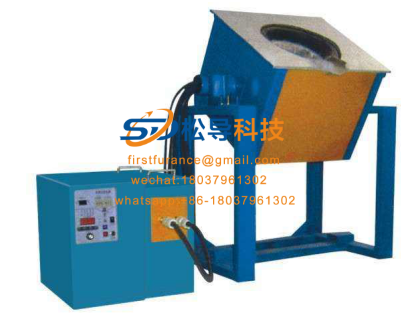1. Model selection for scrap copper melting furnace:
Rated capacity | Rated power | Working temperature | Melting rate | |
GWJTZ0.3-160-1 | 0.3 | 160 | 1200 | 0.3 |
GWJTZ0.5-250-1 | 0.6 | 250 | 1200 | 0.495 |
GWJTZ1.0-500-0.5 | 1.0 | 500 | 1200 | 1.0 |
GWJTZ1.5-750-0.5 | 1.5 | 750 | 1200 | 1.678 |
GWJTZ3-1500-0.5 | 3.0 | 1500 | 1200 | 3.650 |


2 , the main use of scrap copper melting furnace
The smelting of copper metal material, the melting amount is 0.05T- 3 T , the efficiency is high, and the electromagnetic stirring force is used to uniformly smelt the metal, and no other stirring process is needed.
3 , the advantages of scrap copper melting furnace
1. Ultra-small size, movable, covering only 0.6 square meters.
2. It is convenient to replace the furnace body with different weight, different materials and different furnace modes to meet various melting requirements;
3. It is very convenient to install, debug and operate.
4. Can work 24 hours a day, smelting evenly and faster;
5. Environmental protection, comply with environmental protection requirements, and avoid the troubles of environmental protection inspection;
6. Power saving, compared with the thyristor intermediate frequency, not only small size, easy maintenance, but also can save 15-20% .
7. It has electromagnetic stirring effect, which is beneficial to the smelting of metal temperature and uniformity of structure, which is beneficial to scumming and reducing impurities;
8. The equipment is small in size and light in weight. The smelting capacity ranges from a few kilograms to several hundred kilograms. It can be used in a wide range of applications. It is suitable for factory production and is suitable for small-scale smelting in schools and research institutes.
4 , safe use of scrap copper melting furnace
1. Do not sample the copper surface for performance testing . Proper sampling should be done by thoroughly stirring the copper solution and using a sampling spoon to extract the molten metal from the bottom of the crucible. 2. The time of smelting should be controlled . The time from the start of melting to the end of melting is called melting time. The length of the melting time not only affects the productivity, but also significantly affects the quality of the cast casting. As the melting time increases, the elemental burning rate of the alloy increases, and the chance of inhalation increases. Therefore, the melting work should be completed in the shortest time. If possible, try to increase the preheating temperature of the charge. The operation should be compact and the action should be fast. 3. The stirring rod for smelting should be a carbon rod. If other stirring materials such as iron rods are used, the iron rod is melted during the stirring process, and the chemical composition of the alloy is affected. At the same time, if the temperature of the iron rod preheating in the furnace is relatively high or the stirring time is longer, the oxide on the iron rod enters the alloy liquid to become an impurity ; if the temperature of the iron rod preheating is low, the alloy is stirred. It should be attached to the iron rod, which can be observed in production. 4. The use of the covering agent during smelting For the smelting of the copper alloy, the amount of the covering agent is generally : 0.8% - 1.2% by weight of the charging material when using glass and borax , because the thickness of the covering layer is kept 10-15 mm ; When using charcoal, the amount is 0.5%-.0.7% of the weight of the charge . To maintain the thickness of the cover layer of 25-35mm , generally before the pouring, too early to increase the oxidation and inhalation of the copper alloy. If charcoal is used as a covering agent and the slag blocking effect is good, the covering agent may not be removed, so that it also acts as a slag blocking during the pouring process, and the effect is more ideal.

